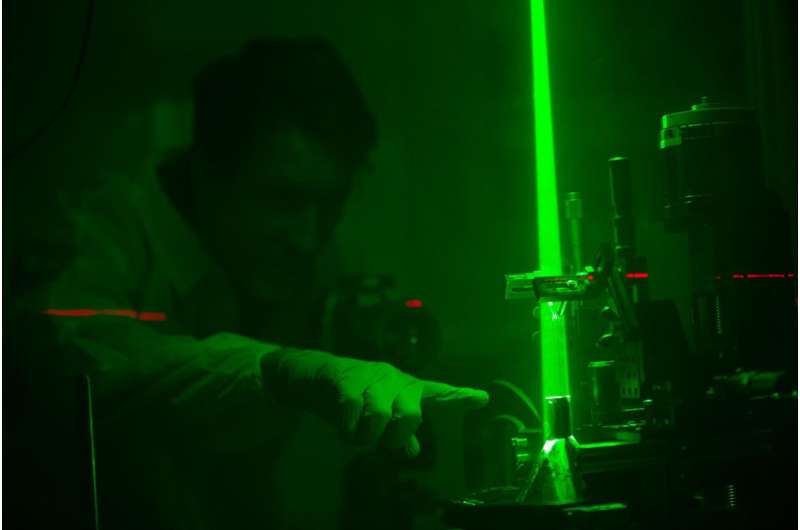
With data gleaned from high-speed cameras, coaches can identify split-second flaws in a baseball pitcher's delivery or a golfer's swing that cannot be seen by the naked eye, revolutionizing sports for players and spectators.
The same technology is being adapted to provide a wealth of new information for researchers looking to improve or restore voice and swallowing function for patients.
"Voice and swallowing both really go hand in hand," said the University of Cincinnati's Rebecca Howell, MD. "As long as they're functioning, nobody thinks anything of it until it's taken away from you. But they both affect our ability to connect with others."
Howell and her colleagues are using tiny high-speed cameras placed through the patient's nose to look at the throat and learn more about the mechanics of speaking and swallowing.
"The vibration of the vocal cords themselves, which give us our voice, and swallowing both go faster than the human eye," said Howell, associate professor in the Divisions of Otolaryngology and Head & Neck Surgery, Laryngology Fellowship program director in UC's College of Medicine, and a practicing surgeon and director of the UC Health Swallowing Center. "By using high-speed technology, we're able to see more. We're talking four milliseconds, so it's a very short time period."
The high-speed images provide a view of the physiology of voice mechanics and swallowing that was previously impossible to observe.
A current study is enrolling both healthy human patients and those with one immobile vocal fold—a condition that can occur due to a stroke or virus or after a surgery. Patients with an immobile vocal fold often report having a hoarse voice or difficulty drinking from a cup. The findings are published in the journal European Archives of Oto-Rhino-Laryngology.

In addition to determining whether the process is tolerable for patients through this pilot research, the team is using the new data to more fully describe the physiology of voice and swallowing. Howell said the new knowledge will change how the field understands the intersection of voice and swallowing, providing new approaches for voice box and swallowing surgeries.
"There's an anatomic area of the voice box that just is not appreciated, and you just can't visualize it with what we currently use," she said. "We'll have a better understanding of the physiology, and then you can actually make more sense of the surgeries that you're doing and the things that you're doing for anatomic variance."
Howell is also collaborating with Liran Oren and Charles Farbos de Luzan's Laryngeal Biomechanics Laboratory to learn more about vocal fold vibration and stiffness. Aerospace engineers by training, Oren, Ph.D., and Luzan, Ph.D., use airflow and aerospace principles to understand voice production. Just like a plane needs airflow to hit its wings in a streamlined fashion to keep the ride smooth, streamlined air flowing over the vocal cords leads to a strong voice.
The same surgical techniques and vocal cord implants employed to restore voice function that were pioneered in the 1940s are still often used today, and patients improve, but they do not get back to their normal voicing.
In the lab, the team uses an artificial lung to blow air through animal model larynges and various implants to create a sound. After Howell prepares each model with an implant or surgical technique she wants to test, high-speed cameras, lasers and microphones capture a wide variety of data.
More information: Liran Oren et al, Acoustics and aerodynamic effects following glottal and infraglottal medialization in an excised larynx model, European Archives of Oto-Rhino-Laryngology (2024). DOI: 10.1007/s00405-024-08519-x
Citation: Technology provides new understanding of voice, swallowing physiology (2024, June 21) retrieved 21 June 2024 from https://techxplore.com/news/2024-06-technology-voice-swallowing-physiology.html
This document is subject to copyright. Apart from any fair dealing for the purpose of private study or research, no part may be reproduced without the written permission. The content is provided for information purposes only.
